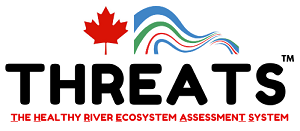For more information about THREATS™, licensing details or participating in a future webinar demonstration, please contact Greenland.THREATS@grnland.com.
We would also welcome opportunities to further develop THREATS™ for specific client needs and with other teams that have complimentary information technology services.

Moriyama & Teshima Architects
On behalf of Moriyama & Teshima Architects, I would like to thank you for your high level of competence and involvement expressed in the design process on the Keele Street Public School Addition and Renovation project… I felt you were integral and instrumental in coming in and taking the project from an ill-fated design…to design completion, tender and the approvals stage. You showed high levels of knowledge and understanding in your field, and your thoroughness and professionalism have led to the success of this project to date. I am thoroughly satisfied in the way you designed the services system, dealt with authorities having jurisdiction, and for your recommendations regarding budgetary concerns.
I would not hesitate in recommending you as a civil engineering consultant on any further project I am involved with.
Gene Ascenzi B.Arch, OAA, MRAIC, LEEP AP
Project Manager
Moriyama & Teshima Architects
August 25, 2014
Mississippi Valley Conservation Authority
On behalf of the Mississippi Valley Conservation Authority, we would like to thank you and your consulting firm for your technical capacity in completing the CANWET model with baseline conditions in our watershed.
I have worked closely with Greenland Consulting Engineers (Greenland) over the past two years as part of this project. We also value your staff’s ability to troubleshoot issues and respond on time. Greenland’s commitment, thoroughness, and professionalism have led to the success of this project with the addition of a new routine to the CANWET software.
It has been a great pleasure to work with Greenland and we look forward to using your expertise again in the near future.
Sobhalatha Kunjikutty, Ph.D, P.Eng.
Water Resources Engineer
Mississippi Valley Conservation Authority
February 19, 2015
Saskatchewan Ministry of Environment
On behalf of the Saskatchewan Ministry of Environment (the ‘Ministry’), we would like to thank Stragis Environmental Services Inc. for its exemplary efforts as an environmental consultant…
The level of service and timely delivery of all reports, analyses and correspondence was greatly appreciated by the Ministry staff… Stragis has provided important insight and recommendations regarding the Ministry’s proactive approach to ensure compliance with all applicable regulations.
To that end, our team at the Ministry would be pleased to provide references for your firm on similar projects in the future.
Chris Milligan
Logistics & Assets Coordinator
Saskatchewan Ministry of Environment
January 17, 2014